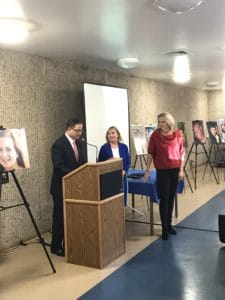
Celebrating Women’s History Through a Timeline of Nursing
Women’s History Month celebrates the innumerable contributions of women to American society. Given that 91% of nurses are women (and an even higher percentage historically) – it seems fitting to honor women’s history by looking back on how the nursing profession began and grew in the U.S.
This profession has been and continues to be built by a legion of extraordinary women who helped shape modern health care as we know it today. These pioneering figures fought for the care and treatment of the sick; developed a rigorous educational and professional nursing practice; invented new techniques, technologies, and systems; advanced gender and racial equality; and brought their skills and expertise to bear on many other fields.
Those advancements and achievements are evident in this abbreviated timeline of nursing in America – with some surprises along the way!
A Nursing Timeline
1800 – 1900
1820 – Florence Nightingale is born in Florence, Italy. She will become a social reformer, statistician, and founder of modern nursing. She trained as a nurse in Egypt, Germany, and France and also worked in Turkey before returning to the U.K.
1841 – Dorthea Dix testifies in legislature about the poor treatment of patients with mental illness. Her work as an advocate of the mentally ill would eventually create the first mental asylums in the US. She would go on to serve as Superintendent of Army Nurses during the Civil War.
1859 – Florence Nightingale publishes her views on nursing care in “Notes on Nursing,” which informs the tenets of modern nursing practice.
1861 – 1865 – During the Civil War, the American Army Nurse Corps triages and treats soldiers.
1873 – 1889 – The Bellevue Hospital School of Nursing is founded in New York City as the first nursing school in the United States. Shortly after, training schools are established in Connecticut and Boston.
1881 – Clara Barton founds and becomes the first president of the American Red Cross.
1886 – “The Nightingale,” the first American nursing journal, is established.
1896 – The Nurses Associated Alumnae holds its first meeting, with an early goal of improving nursing care for American soldiers. It would later be renamed the American Nurses Association and become one of the largest nursing organizations in the US.
1900 – 1950
1901 – The United States Army Nurse Corps is established.
1902 – New York City Board of Education hires Lina Rogers Struthers as North America’s first school nurse.
1908 – The United States Navy Nurse Corps is established.
1908 – The University of Minnesota School of Nursing awards its first bachelor’s degree in nursing, setting a new standard in nurse training.
1918 – Lenah Higbee is the first living woman to be awarded the Navy Cross for distinguished service.
1918 – Frances Reed Elliot enrolls as the first African-American in the American Red Cross Nursing Service.
1918 – Viola Pettus, an African-American nurse in Texas, garners fame for her care of Spanish Flu victims, including members of the Ku Klux Klan.
1919 – 1923 – Mary Breckinridge, founder of the Frontier Nursing Service, rides 700 miles on horseback to survey the health needs of rural Kentuckians.
1938 – The Nurses Memorial in Arlington National Cemetery is established, created to honor nurses who served during World War I. Over 600 nurses are buried there.
1941 – 1945 – More than 59,000 American women serve in the US Army Nurse Corps and over 11,000 women serve in the US Navy Nurse Corps during World War II.
1943 – Delaware is the first state to admit African-American nurses to membership.
1950 – Present
1951 – The National Association of Colored Graduate Nurses merges with the American Nurses Association.
1951 – Vocational Nursing standards for education and the LPN / LVN level of nursing is established.
1954 – One of the country’s first Ph.D. programs in nursing is offered at the University of Pittsburgh.
1955 – Elizabeth Lipford Kent becomes the first African-American to earn a Ph.D. in nursing.
1955 – The US Army Nurse Corps admits Edward L.T. Lyon, its first male nurse.
1955 – The nation’s first master’s degree in nursing is granted at Columbia University School of Nursing.
1959 – Dee O’Hara becomes the first aerospace nurse to NASA’s first astronauts, laying the groundwork of the field of Space nursing.
1963 – Ruby Bradley retires from the US Army Nurse Corps with 34 medals and citations for bravery.
1965 – The first nurse practitioner (NP) role is established.
1965 – The US Navy Nurse Corps admits its first male nurse.
1974 – Florence Wald, dean at Yale Nursing School, founds Connecticut Hospice, establishing the US hospice movement.
1977 – The M. Elizabeth Carnegie Nursing Archives is established in Virginia, serving as the only archives in the States dedicated to minority nurses.
1979 – The first clinical doctorate – a nursing doctorate (ND) – is established at Case Western Reserve University, OH.
1980 – Viola Davis Brown is the first African-American nurse to lead a state office of public nursing in the U.S.
1990 – The Department of Health and Human Services creates a commission to address the national nursing shortage.
1992 – Eddie Bernice Johnson is the first nurse elected to the U.S. Congress.
2010 – The Institute of Medicine issues a critical report, The Future of Nursing, which contains evidence-based recommendations to lead change for improved health care.
2014 – The Affordable Care Act becomes law, resulting in an estimated 8 million new health insurance enrollees. This spike in health care utilization leads to a demand for travel nurses that reaches a 20-year high.
2019 – The number of registered nurses (RNs) crosses the 4 million threshold, with a total of 4,096,607 in the U.S. as of October 2019.
2020 – The World Health Organization (WHO) declared 2020 the International Year of the Nurse and the Midwife. The coronavirus disease (COVID-19) pandemic showed the world that nurses are the cornerstone of health care.
Celebrating Women’s History Month wouldn’t be complete without acknowledging nurses’ immense contributions to the medical field, public health, and gender and racial equality. In just 200 years, they’ve gone from a role primarily of “caretakers” to highly skilled and trained professionals who are advancing health care in broad and exciting ways.
What’s next for nurses? Hard to tell, but we know that whatever it is — it’s going to be amazing!
This article is furnished by California Casualty, providing auto and home insurance to educators, law enforcement officers, firefighters, and nurses. Get a quote at 1.866.704.8614 or www.calcas.com.

 Like you, we worry that our young drivers are not 100 percent focused when behind the wheel. Even with all the information about how dangerous it can be, younger, inexperienced drivers are still the most likely group to be involved in a
Like you, we worry that our young drivers are not 100 percent focused when behind the wheel. Even with all the information about how dangerous it can be, younger, inexperienced drivers are still the most likely group to be involved in a